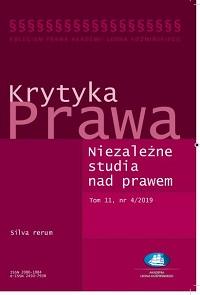The Argument from Legal Fetishism in Constitutional Discourse
Jacek Srokosz
University of Opole
3/2019 11 (1) Krytyka Prawa. Niezależne studia nad prawem
DOI 10.7206/kp.2080-1084.287








